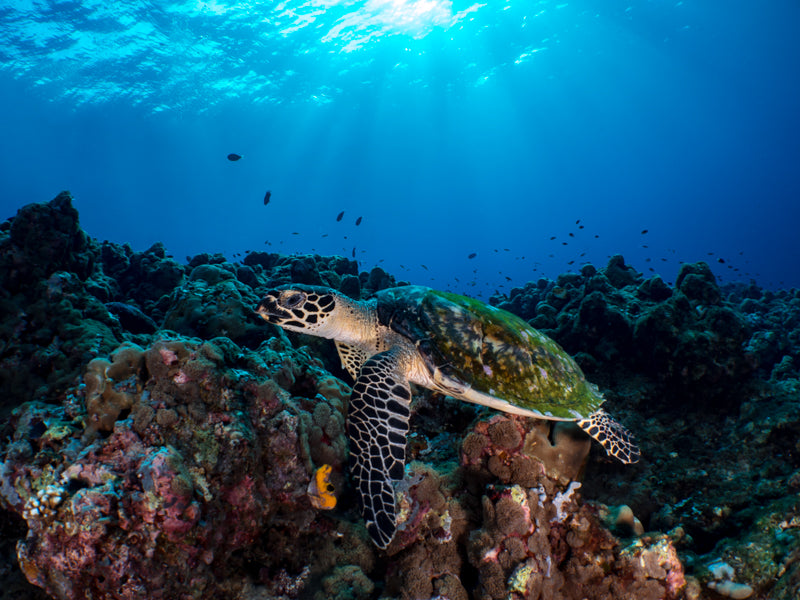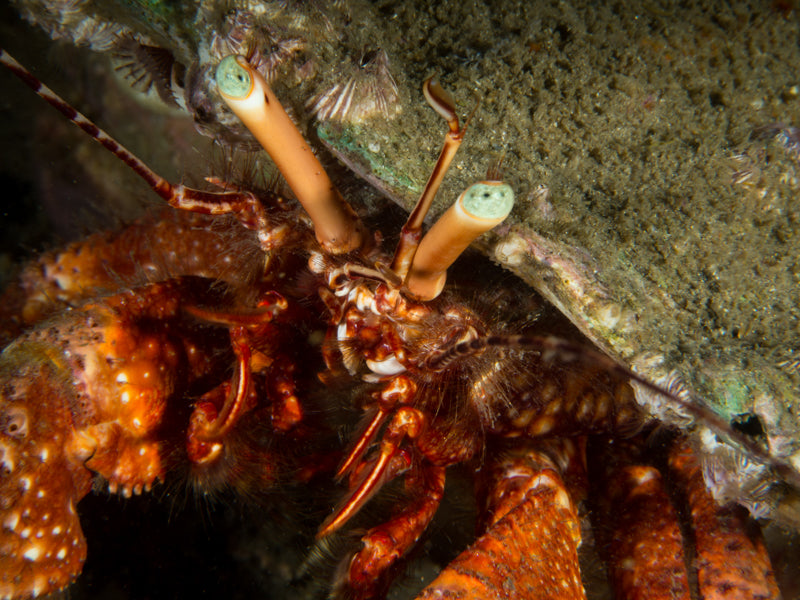Written by Lee Burghard October 2015
One of the major advantages underwater compact system users have long enjoyed is the ability to use wet-mate lenses for doing both wide angle and macro imaging all in the same dive. For the rest of us, using interchangeable lens cameras like the Olympus and Panasonic micro 4/3's has forced us to choose between a dedicated wide-angle lens or macro lens before hopping in the water. It can be a difficult decision, and typically whatever lens we choose we're stuck with for the whole dive. Just speaking for myself, but I can't tell you how many times I picked the macro lens only to have a school of eagle rays come cruising by the reef.

Well I have some good news for all of you micro 4/3's users, there's now a lens solution that can capture a manta ray, nudibranch, and everything in between all in the same dive...yes, you heard that right! Using the Olympus 14-42mm EZ lens with the new Nauticam WWL-1 and CMC makes for a versatile combination with great image quality and shooting performance. So let's take a further look at why this combination is a real break-through for micro 4/3's underwater photographers and videographers.
The Equipment
The Olympus 14-42mm EZ Lens

The Nauticam WWL-1

The Nauticam Wet-Wide Lens 1, also called WWL-1, is real gem of innovation from Nauticam. Unlike most wet-mate lenses, the WWL-1 was specifically designed for more contemporary cameras with larger sensors. This makes it capable of being used on everything from 35mm full frame sensors to modern 1 inch compact sensors. So why does the WWL-1 make such a great combo with the Olympus 14-42mm EZ?
- Super-wide capability - Underwater the WWL-1 provides an approximate 130 degree field of view.
- Full zoom through - The WWL-1 offers full zoom-through capability when used with a lens like the 14-42mm EZ. This is very unique as most wet-mate wide angle lenses fall apart optically once zoomed in. This offers a convenience factor of not having to remove the lens when you want to zoom in and properly frame your underwater subject.
- Solid optical performance - The WWL-1 has an optically coated glass element and provides excellent edge to edge corner sharpness.
- Close minimum focus distance - The WWL-1 has a very close minimum focusing distance throughout the full focal length of the 14-42mm EZ lens. By minimizing the distance between your lens and the subject you can greatly improve color, contrast, and sharpness in your images. In addition this capability makes it an ideal choice for close-focus wide angle.
Olympus 14-42mm EZ with WWL-1 at 14mm: Images by Kevin Palmer


The Nauticam CMC

The Nauticam CMC is a powerful super macro wet lens designed for use with fixed lens compacts and mirrorless interchangeable lens cameras. It's perhaps the best wet-mate macro lens I've used with the Olympus 14-42mm EZ lens for a number of reasons:
- Specifically designed for underwater - While most wet-mate macro lens were originally tools designed to be used in air, the CMC was designed to account for all of the physics involved in underwater imaging.
- Superior optical performance - With precision crafted glass and an optical coating the CMC provides un-matched edge to edge corner sharpness, contrast, and color when compared to other traditional wet-mate macro lenses.
- Super macro capabilities - By significantly reducing the minimum focusing distance on the 14-42mm EZ lens at 42mm, you can get in close enough to properly frame an underwater subject the size of your thumbnail. This opens up a whole variety of super-macro imaging opportunities for underwater subjects.
- Works excellent with Auto-Focus - Due to the improved contrast and brightness with the CMC, the camera's auto-focus tends to be more responsive and focuses more quickly.
Wet Lens Swaps Made Easy
Typically most wet-mate lenses use a 67mm threaded mount that's designed to thread onto a 67mm threaded flat port. With this mounting method, swapping wet-mate lenses like the WWL-1 and CMC can be difficult, and even time consuming while you're underwater, causing you to potentially miss a great photo opportunity. Nauticam recently released a new Bayonet Mount System that's designed to work specifically with the Nauticam CMC and WWL-1 wet lenses. This new bayonet mount makes the process of changing these lenses simple and quick; in fact it can be done in just a few seconds.
In order to utilize the Nauticam bayonet mount you'll need to add:
- The Nauticam Bayonet Mount Adapter for SMC/CMC lenses to your Nauticam CMC
- The Nauticam Bayonet Mounting Ring to your Nauticam WWL-1
- The Nauticam M67 Bayonet Mount Converter for Wet Lenses to your 67mm threaded Nauticam flat port.
- 1 or 2 of the Nauticam Bayonet Mount Lens Holders for your Nauticam or ULCS arms
Summary

So what makes this combination such a compelling option for micro 4/3's underwater photographers and videographers?
- Versatility - By attaching the Nauticam WWL-1 for wide angle shooting, using the native 14-42mm focal length for mid-range shooting, and than attaching the CMC for your macro shooting you a have a wide range of subjects you can capture. Simply put it equates to a versatile powerhouse than can shoot everything from the whale shark cruising by to a tiny nudibranch on the reef all in the same dive.
|
14mm w/ Nauticam WWL-1
|
14mm
|
|
42mm
|
42mm w/ Nauticam CMC
|
- Great Image Quality and Shooting Performance
- Cost Efficient and Travel Friendly - You only need 1 lens/port, the Nauticam WWL-1, and the CMC. In most cases this will be more cost efficient and travel friendly than a more traditional micro 4/3's shooter needing 3 lenses (a macro, mid-range, and wide-angle) and 3 separate ports for each lens.
- Simple and Easy Lens changes - Switching between wide-angle and macro can be accomplished in seconds using the Nauticam bayonet mounts with these wet lenses, and it can all be done underwater! This means no more changing out ports and lenses in between dives on the surface.




